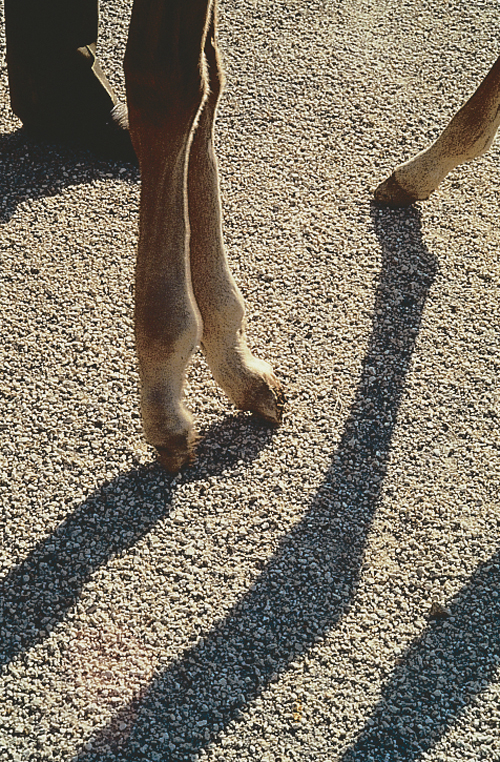Difference between revisions of "Equine Orthopaedics and Rheumatology Q&A 21"
Jump to navigation
Jump to search
| (3 intermediate revisions by 2 users not shown) | |||
| Line 12: | Line 12: | ||
|q1=What is the most likely diagnosis? | |q1=What is the most likely diagnosis? | ||
|a1= Congenital flexural deformity of the metacarpophalangeal and/or distal interphalangeal joints in both forelimbs. | |a1= Congenital flexural deformity of the metacarpophalangeal and/or distal interphalangeal joints in both forelimbs. | ||
| − | |l1= | + | |l1= Flexural Limb Deformity |
|q2=List the various options available for treatment of this condition. | |q2=List the various options available for treatment of this condition. | ||
|a2= | |a2= | ||
| Line 19: | Line 19: | ||
#Application of toe extensions to the feet to extend the weight-bearing surface further dorsally. In this case the foal was immediately able to bear weight on its limbs. Exercise then helps to stretch the shortened flexor tendons. This can obviously be combined with intravenous administration of tetracyclines. <br><br> | #Application of toe extensions to the feet to extend the weight-bearing surface further dorsally. In this case the foal was immediately able to bear weight on its limbs. Exercise then helps to stretch the shortened flexor tendons. This can obviously be combined with intravenous administration of tetracyclines. <br><br> | ||
However, in some foals, the application of toe extensions will make the flexural deformities in the metacarpophalangeal joints worse. In such cases, the deformities of the metacarpophalangeal joints should be corrected, with splints, and the distal interphalangeal joints corrected at a later date. | However, in some foals, the application of toe extensions will make the flexural deformities in the metacarpophalangeal joints worse. In such cases, the deformities of the metacarpophalangeal joints should be corrected, with splints, and the distal interphalangeal joints corrected at a later date. | ||
| − | |l2= | + | |l2= Flexural Limb Deformity#Treatment |
| − | |||
</FlashCard> | </FlashCard> | ||
{{#tag:imagemap|Image:Next Question.png{{!}}center{{!}}200px | {{#tag:imagemap|Image:Next Question.png{{!}}center{{!}}200px | ||
| − | rect 0 0 860 850 [[Equine Orthopaedics and Rheumatology Q&A | + | rect 0 0 860 850 [[Equine Orthopaedics and Rheumatology Q&A 01|Next Question]] |
desc none}} | desc none}} | ||
[[Category:Equine Orthopaedics and Rheumatology Q&A]] | [[Category:Equine Orthopaedics and Rheumatology Q&A]] | ||
Latest revision as of 15:44, 4 August 2011
| This question was provided by Manson Publishing as part of the OVAL Project. See more Equine Orthopaedic and Rheumatological questions |
A foal was unable to stand at birth. When it tried to use its forelimbs it always knuckled forward. On manipulation, it was difficult to extend the phalanges beyond the vertical axis.
| Question | Answer | Article | |
| What is the most likely diagnosis? | Congenital flexural deformity of the metacarpophalangeal and/or distal interphalangeal joints in both forelimbs.
|
Link to Article | |
| List the various options available for treatment of this condition. |
However, in some foals, the application of toe extensions will make the flexural deformities in the metacarpophalangeal joints worse. In such cases, the deformities of the metacarpophalangeal joints should be corrected, with splints, and the distal interphalangeal joints corrected at a later date. |
Link to Article | |
